Bridging plate
1. Principles
Fracture types:
A) Comminuted, unreduced fracture
B) Comminuted fracture aligned biologically
C) Fracture aligned and biologically stabilized
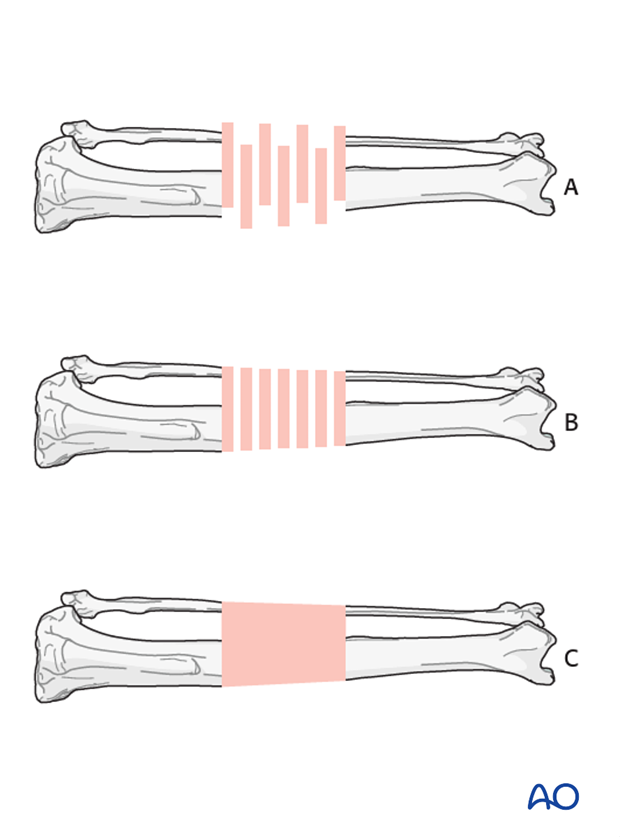
2. Preparation and approach
For this procedure, one of the following two patient positions are used:
One of the following two approaches are used:
3. Surgical technique
Reduction
Indirect reduction is achieved by distracting and aligning the major bone segments using bone clamps or other distraction techniques.
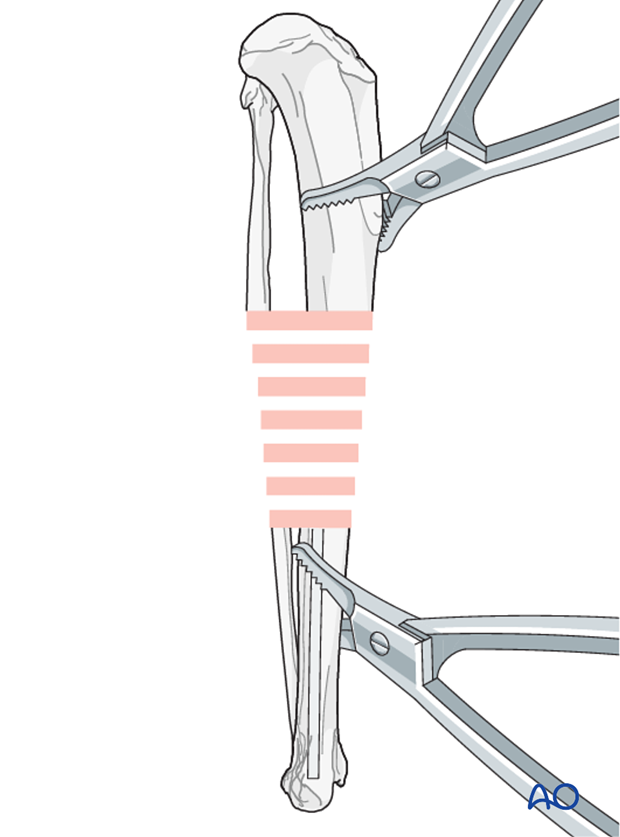
Validation of alignment and rotation
Once the bone length has been restored, it is necessary to check for correct alignment and rotation.
Rotational alignment can be judged by palpation or by direct visualization of the relation between the tarsus and the stifle.
Flexing and extending the tarsus and stifle will help to check the alignment of the repair.
Note: Position of the cat in dorsal recumbency permits a better three-dimensional view of the tibia, thus it helps in the verification of alignment.
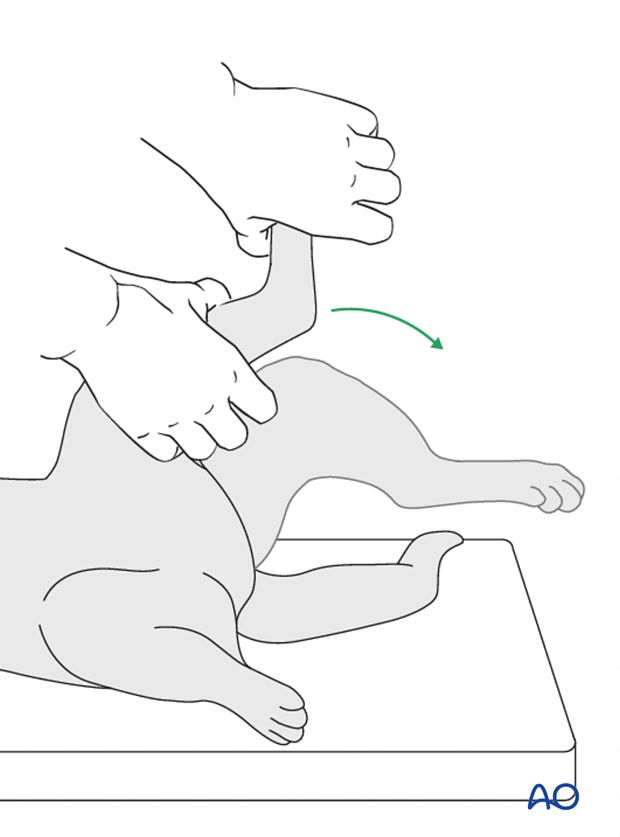
Plate selection
A large plate must be selected because it must be able to withstand all the weight bearing forces because the bone will not be sharing the load. A lengthening plate (a plate without holes in the central part) can be used.
Note: the plate should not be wider than the tibia width and screw hole size should not exceed 40% of the bone diameter.
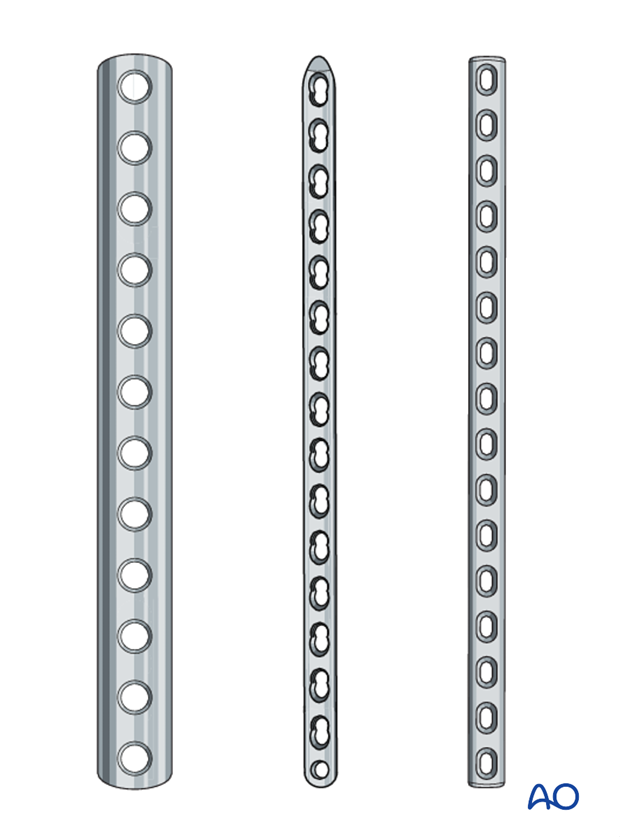
Plate placement
The plate is contoured and placed on the medial side of the tibia, in bridging function.
Read more about plate preparation.
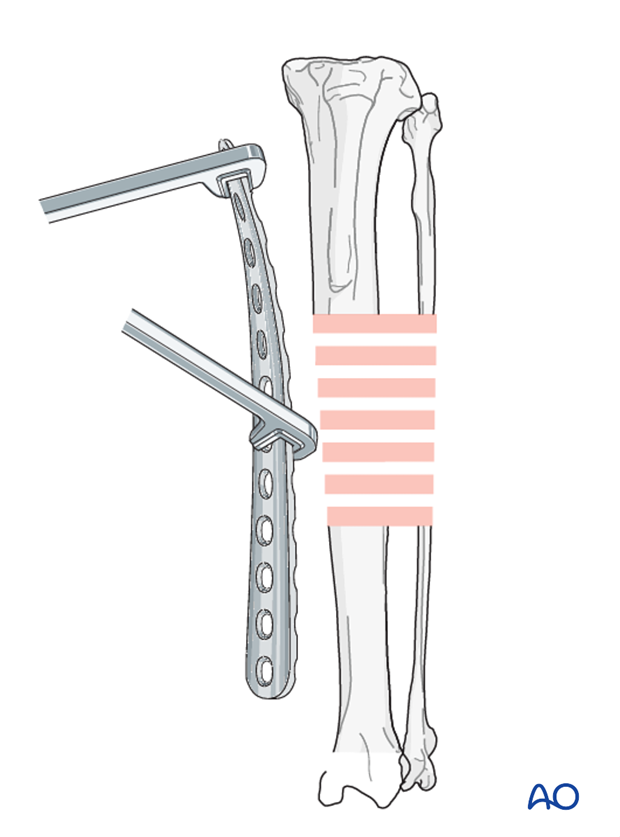
Plate application
The plate is applied by inserting at least three bicortical screws in each major segment. The plate should bridge at least 75% of the length of the tibia.
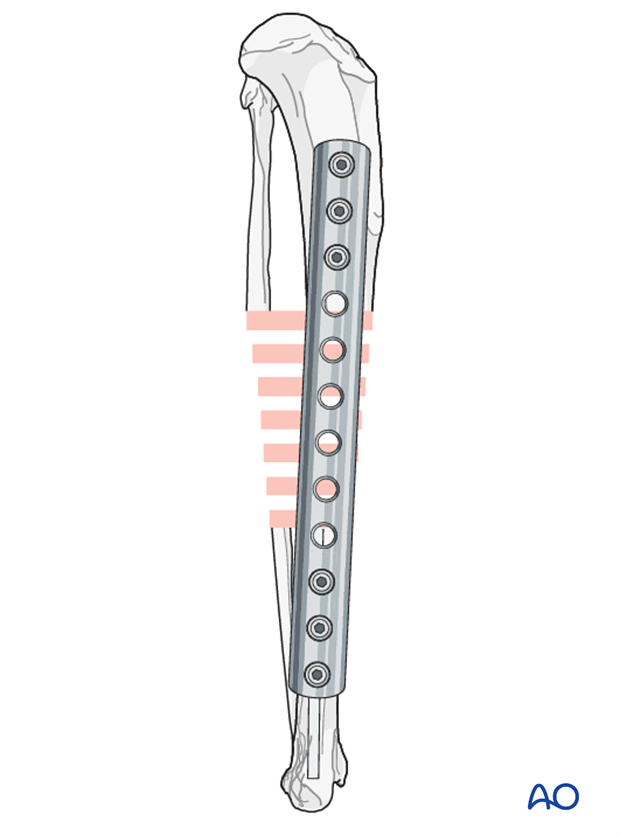
Final fixation.
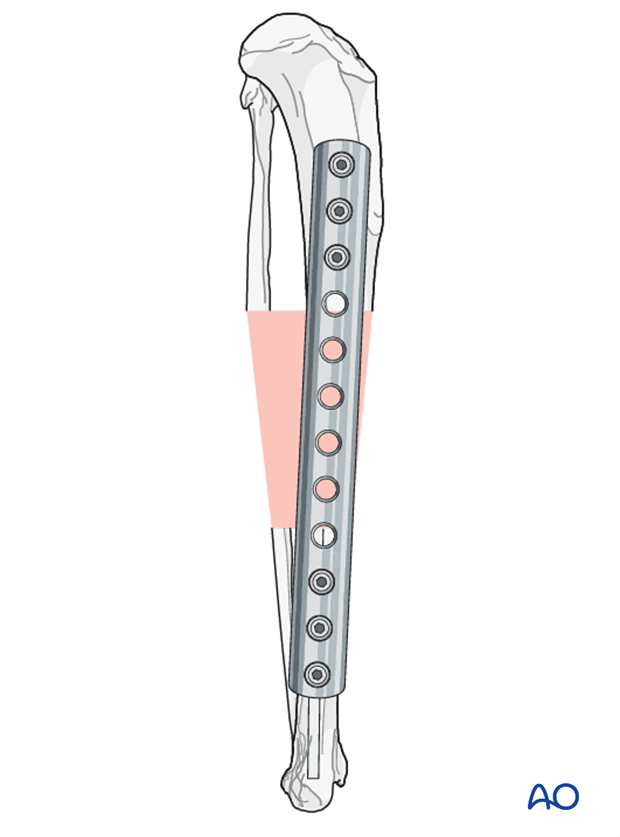
Locking plate
A locking plate can be used instead of a traditional bone plate. Using a combination of non-locking and locking screws or locking screws alone can provide adequate fixation. If a combination of screws is used, the plate must be anatomically contoured and the non-locking screws should be placed and tightened first because they will compress the plate to the bone.
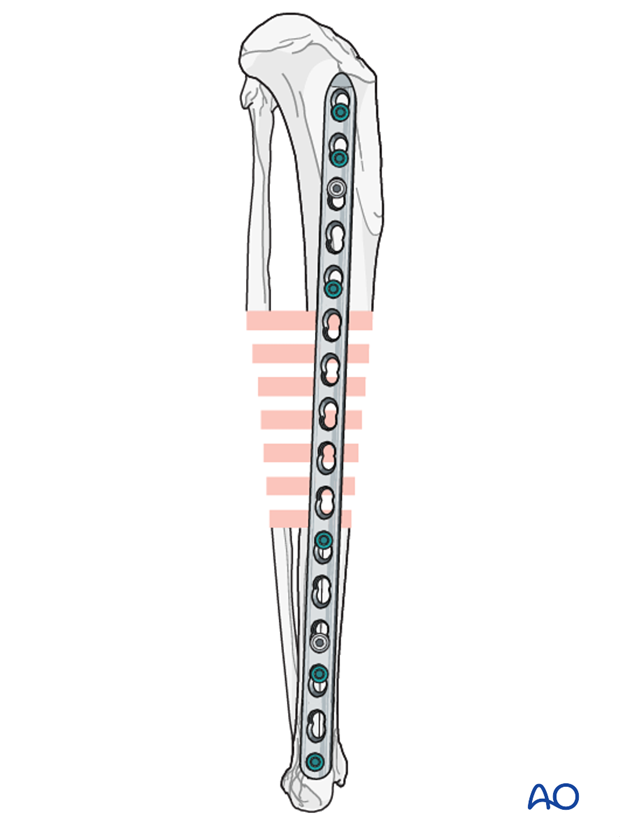
Final fixation.
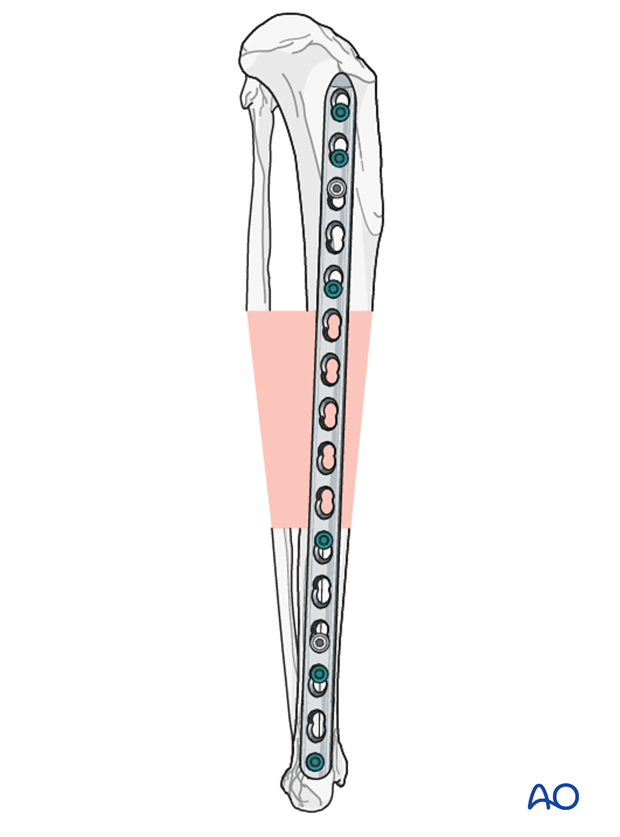
4. Case example
8-year-old MC DSH that was HBC.
Pre-operative radiographs show complete, comminuted, oblique fracture between the middle and distal thirds of the right tibia with caudal, proximal, and lateral displacement. Transverse fracture between the middle and distal thirds of the right fibula and an oblique fracture of the proximal fibula.
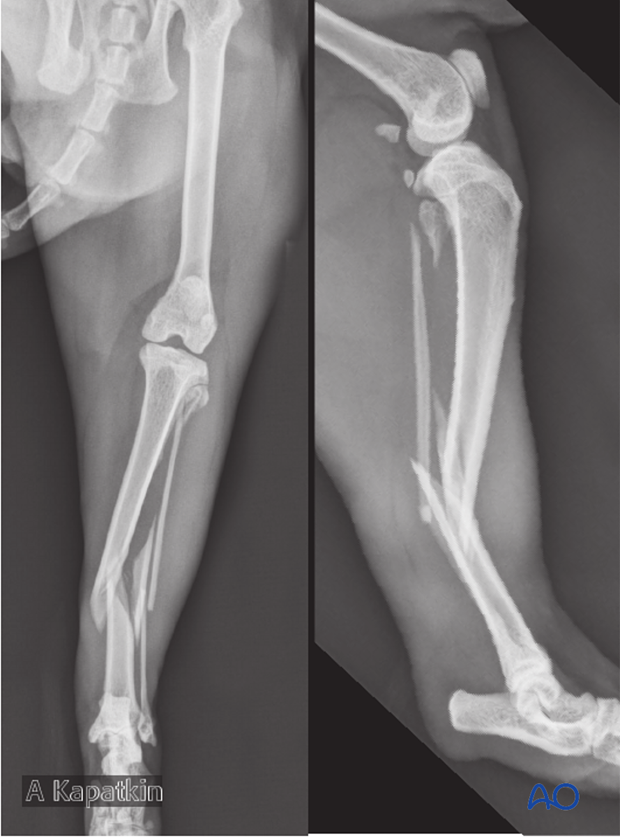
Repaired with a 12 hole 2.7 LCP bridging MIO.
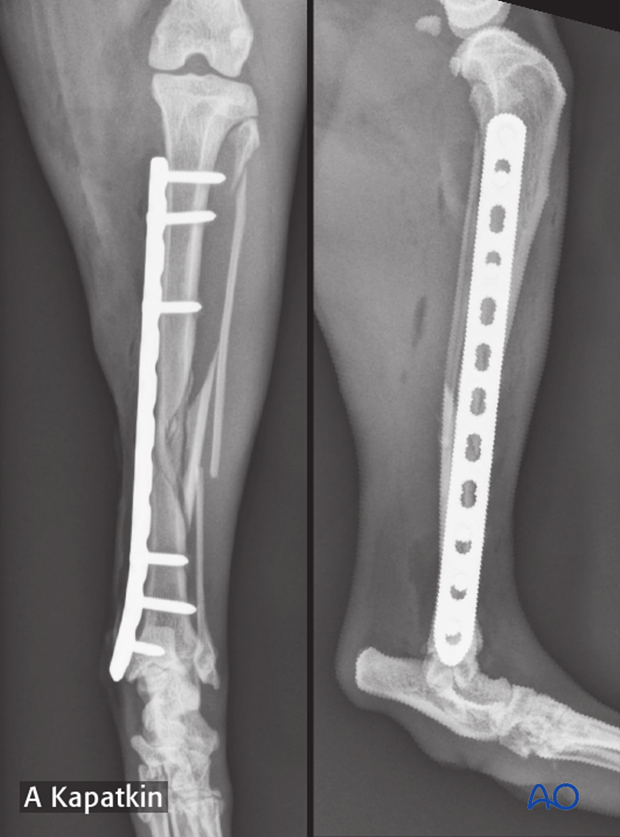
5. Aftercare
Phase 1: 1-3 day after surgery
The aim is to reduce the edema, inflammation and pain and to protect the surgical wound. A compressive bandage or modified Robert Jones bandage can be used. Integrative medical therapies, anti-inflammatory medications (note in the cat that many are toxic; only use drugs labeled for cats) and analgesics are recommended. In most cases, 10-20 minutes of ice therapy is recommended every 8 hours, but maybe challenging in cats.
Phase 2: 4-10 days after surgery
The aim is to resolve the hematoma, edema and control pain, and prevent muscle contracture. Analgesic medications may still be needed. Anti-inflammatory medications used in the cat are not labeled for continued use after a few days and should be avoided. Rehabilitation and integrative medical therapies can be used.
If the cat is not starting to use the limb within a few days after surgery, a careful evaluation is recommended.
10-14 days after surgery the sutures are removed.
Phase 3: 10 day-bone healing
Radiographic assessment is performed every 4-8 weeks until bone healing is confirmed.
Implant removal
More information about implant removal can be found here.












